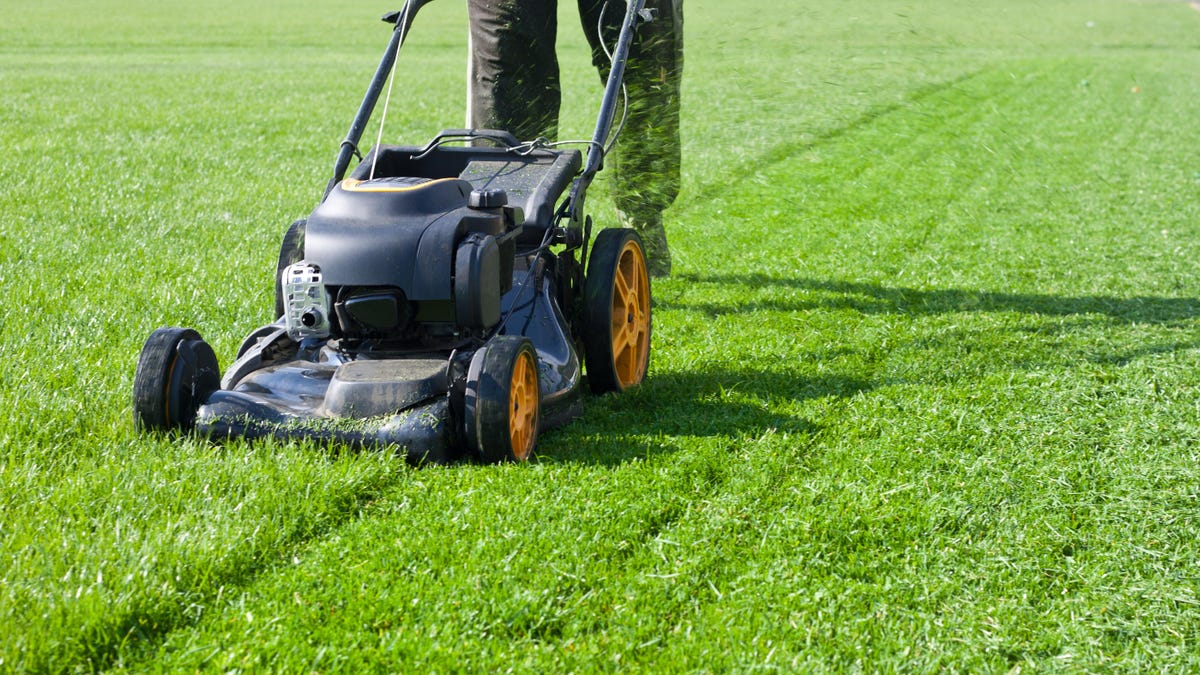Everything You Should Do to Keep Your Lawnmower Running All Summer
Keeping your yard in good shape during the summer and fall can be enough of a battle against weather and weeds—you don’t also need problems with your lawnmower on top of it. But some lawnmower issues can be avoided...


Photo: Tretyakov Viktor (Shutterstock)
Keeping your yard in good shape during the summer and fall can be enough of a battle against weather and weeds—you don’t also need problems with your lawnmower on top of it. But some lawnmower issues can be avoided entirely—and the life of your lawn mower can be extended—if you carry out a basic maintenance checklist once every season.
Remove your lawnmower’s spark plug
Step one for any lawnmower maintenance is to remove the spark plug. For electric mowers, unplug it from power, and for battery operated mowers, remove the battery. This is vital for safety because it will keep the mower from starting up during its maintenance. If you plan to keep all of your fingers, this step is key. If you notice the spark plug is worn, you can change it easily yourself. Simply use a wrench to remove the old spark plug and replace it by tightening the new one. Avoid over-tightening—a quarter turn past finger-tight is all you need.
Remove leaves every time you mow
It’s important to regularly remove any leaves and other debris from the blades and deck of the mower. To do so, turn the mower on its side and—after removing the power source—brush any leaves or grass out of the deck area above the blade, as well as off of the blades themselves with a wire brush or a stiff bristle plastic brush. Buildup of leaves inside the deck can cause overheating or jam up the mower.
G/O Media may get a commission
Change your lawn mower’s oil
Another simple maintenance task for gas-powered mowers is to change the oil regularly. Before you put your mower away at the end of the season, drain the old oil out by removing the plug in the bottom of the oil tank and allowing the oil to run out into a pan. If you have the type of mower that has no plug, you’ll need to turn it upside down to drain it. This can be made simpler by propping it against a wall or some saw horses. You should use a metal pan rather than plastic because some plastics will be degraded by the oil (a disposable lasagna tray is a good option). Once the oil is drained, replace the plug or turn the mower upright and refill the tank with new oil.
Replace the air filter
Replacing the air filter after each mowing season—or at least after an especially smokey season—can help your mower last longer and perform better. Replacing your air filter or cleaning a reusable permanent filter will cut down on engine wear and make your mower more efficient. Since gas powered engines need to suck in air to function, a clean filter makes your mower cheaper to run, and helps prevent overheating.
Fog the engine
A practice known as fogging the engine is also recommended for annual maintenance: Removing the outer cover of your mower and coating the inside of the carburetor and spark plugs with fogging oil will help prevent these crucial areas from getting damp during the mowing season. This should be done at the end of the season, and, as always, you should remove the spark plug before attempting this task.
Empty the fuel tank
Before putting your mower away for the season, you should also empty the fuel tank because gas can go bad over time, either by evaporating out more of the burnable material or by collecting condensation. Leaving fuel in the tank for long periods of time can corrode and damage the tank, so it’s best to either use up all the fuel or drain the tank before putting it away for the colder months. If you do decide to drain it, remember that gasoline is combustible and that the vapors are extremely flammable. Be sure to drain the gas in a very well ventilated area free from sparks and dispose of the gas properly when you’re done.
Sharpen and balance the blades
Sharpening and balancing the blades on your lawn mower is an annual maintenance task you can do if you’re up for a challenge. Sharp blades cut grass more easily, saving on fuel costs, and doing this will for battery-operated mowers will extend the battery life. The best option for beginners is a lawnmower blade sharpening kit. These come with a rotary sharpening tool you can use with any standard drill and a guide to help you balance the blades. You’ll need to remove the blades with a blade-removal tool and place the blades in a vice for sharpening. Make sure to wear proper safety gear like goggles and gloves, and clean up the metal filings using a shop vac or a magnet to avoid metal splinters. If you don’t have the tools or the time to sharpen your own blades, you can take your mower in to get it serviced by a professional once per season.

 FrankLin
FrankLin 
































